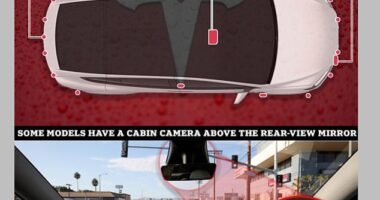SCIENTISTS are mapping the mysterious “lost” continent of Zealandia for the first time.
The gigantic landmass in the South Pacific disappeared beneath the waves 23million years ago – and has never been explored.
It was originally part of the gigantic super-continent Gondwana, which was made up of continents which now exist in the southern hemisphere.
Covering 1.9million square miles, Zealandia is six times larger than than Madagascar, the next-largest continental fragment.
It extends from south of New Zealand northward to New Caledonia and west to the Kenn Plateau off Australia’s east coast.
About 94 per cent of the landmass is underwater.
The “hidden” continent is now being partially mapped thanks to a deepwater mapping expedition led by The University of Queensland.
Chief scientist Dr Derya Gürer spent 28 days at sea on Schmidt Ocean Institute’s research vessel Falkor, exploring the north-western edge of the continent.
“We’re only just starting to discover Zealandia’s secrets,” Dr Gürer said.
“It’s remained hidden in plain sight until recently and is notoriously difficult to study.”
Radar scans carried out by the team explored the contours of the narrow connection between the Tasman and Coral Seas in the Cato Trough region – the narrow corridor between Australia and Zealandia.
In total, they have provided 14,00 square miles of topographical data to the Seabed 2030 project.
The project aims to produce a publicly available bathymetric map to measure the depth of the world’s ocean floor depth by 2030.
“The seafloor is full of clues for understanding the complex geologic history of both the Australian and Zealandian continental plates,” Dr Gürer said.
Gondwana supercontinent – the key facts
Here’s what you need to know…
- Gondwana was a giant prehistoric landmass that formed around 180million years ago
- It existed long before humans, at a time when dinosaurs ruled the Earth
- Gondwana was a supercontinent – a big tapestry of land that would later split up to form the smaller continents we know today
- The lump of rock was made up of Africa, Antarctica, South America, Australia and parts of the Middle East and Asia
- Gondwana began to break up in the mid-Jurassic period, about 170 million years ago
“This data will also improve our understanding of the complex structure of the crust between the Australian and Zealandian plates.
“It’s thought to include several small continental fragments, or microcontinents, that were split from Australia and the supercontinent Gondwana in the past.”
Zealandia is thought to have broken off from Gondwana between 85 and 79million years ago.
The supercontinent encompassed what is today South America, Africa, Antarctica, Australia, Zealandia, Arabia and the Indian subcontinent.
By about 23million years ago, it’s thought that Zealandia was almost completely submerged in water.
Experts spent 20 years gathering data to make the case for the submerged landmass being a continent.
Their efforts were frustrated because most of it is hidden beneath the waves.
Zealandia was granted continent status in 2017 following a paper published in the Journal GSA Today.
In it, researchers successfully argued that the landmass was a distinct geological entity that met all the criteria applied to Earth’s other continents.
Those include elevation above the surrounding area, distinctive geology, a well-defined area and a crust thicker than that found on the ocean floor.
In other news, the history of a lost continent buried under Europe for 100million years has been revealed for the first time.
Hidden mountains buried 400 miles under the Earth’s crust could be larger than Everest.
And, there’s a secret stash of more than a quadrillion tons of diamonds hiding below the Earth’s surface.
Do you think Zealandia should be classified as a continent? Let us know in the comments!
We pay for your stories! Do you have a story for The Sun Online Tech & Science team? Email us at [email protected]
This post first appeared on Thesun.co.uk



















